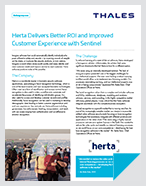Mobile apps are the software of the future. According to Statista, 178.1 billion mobile apps were downloaded in 2017, and that number is expected to increase to 258.2 billion in 2022. In 2018, global mobile app revenue stood at $365.2 billion - a figure expected to almost triple to $935.2 billion in 2022.
These figures are consistent with the increase in mobile phone use across the globe. Statista statistics for 2018 put mobile phone website traffic at 52.2% of all website traffic worldwide - a 1.9% increase from the previous year.
With mobile phones and devices dominating the market, it’s only natural that their use will increase in the work environment. And once mobile apps are being used to transfer and process sensitive information or perform tasks imperative to running a business, that makes security breaches a particularly important concern.
So how does a company protect its software from hacking and cyber intrusions?
Security measures should be integrated into the app’s development from the outset, but one way to externally secure the app is a process called application hardening.
What Is Application Hardening?
Application hardening is an overall term for “hardening” or protecting an app against intrusions by eliminating vulnerabilities and increasing layers of security. Data security involves multiple layers of defense that are not limited to the app itself: the host level, the operating system level, the user level, the administrator level, and even the physical level of the device, all have vulnerabilities that a good security system must address. For this reason, application hardening might be called system hardening or OS hardening as well.
Why Is Protecting Your Mobile Application Important?
Not everyone who uses the Internet has good intentions.
Software piracy is a major concern for software developers and vendors. Software monetization solutions make it easy for developers to make money selling their software, but if people figure out a way to download and use it for free, that can seriously harm the company’s bottom line. Software intellectual property protection is just one item on the application hardening checklist.
Another important reason application hardening is so important is database security - particularly in the healthcare and financial sectors. In these sectors, the outcome of a security breach can be especially dire.
The increase in Internet of Things devices also presents an urgent need for application hardening. The fact that a hacker might be able to change the settings or behavior of smart devices - doorbells, pacemakers, self-driving cars - makes security breaches in this sector not only dangerous but deadly.
Because of the prevalence of mobile device use, some companies allow or encourage their employees to use their own devices to perform job-related tasks. Since these devices are not part of a secured system, they can make the company more vulnerable.
Mobile App Security
Securing a mobile app, whether with application hardening or internal security measures, involves three main components:
Prediction
To prepare for a disaster, you first have to know what it is you’re likely to be facing. While no one can predict the future, cybersecurity software can make some educated guesses by analyzing data and threat intelligence to calculate trends in cyber attacks.
Detection
You can’t successfully stop a cyberattack if you don’t know it’s happening.
One of the most effective application hardening techniques is privilege escalation detection: that is, a system that identifies when an intruder has granted themselves restricted access to data or networks. A common method of taking control of a system is “jailbreaking” or “rooting,” which involves taking control of a system from its “root” or most basic level. Privilege escalation detection notifies you when the root level of a system has been compromised.
Prevention
They say prevention is the best cure. That’s definitely true when it comes to information security in general and application hardening in particular.
There are a number of measures you can take to prevent cyberattacks:
- Obfuscation and cryptography: This method obscures the code so attackers won’t be able to see or understand the information in the application.
- Application whitelisting software: This type of software prevents all applications that have not been specifically whitelisted from running on the system.
- Authentication hardening: This secures the login and authentication process. Application hardening techniques include keylogging prevention or detection, which prevents a hacker from recording keystrokes that might reveal a user’s login information.
Application Hardening: An Essential Component of Mobile App Monetization
Protecting your software from cyber-attacks and piracy is key to ensuring maximum ROI. Application hardening is one crucial way to make sure your app is protected. Thales's Sentinel LDK is a powerful software monetization solution that keeps your app secure and provides you with a robust system for remote management.





